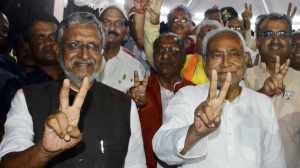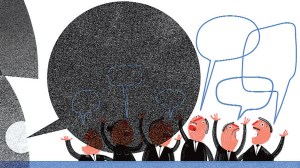Falling numbers
The IIP decline is shocking,but there are reasons to be cautious before making policy changes
The index of industrial production (IIP) saw a shocking and sudden decline in output in October. On a year-on-year basis,industrial production fell by more than 5 per cent. The fall is an extremely unusual phenomenon as most emerging economies tend to see dips in growth rates rather than output itself. The first question to be asked before going further with analysing this data is whether the data is correct. As Commerce Secretary Rahul Khullar recently admitted,the export data,which showed very high export figures and had appeared puzzling to most observers,was miscalculated. This is bad enough in normal times but is extremely dangerous in difficult times,as at present.
If the IIP numbers are indeed correct,this could be one of the most difficult times in Indian macroeconomic policy-making. Inflationary expectations of households are as high as 12 per cent for the coming year. These combined with low growth could yield stagflation. In such a situation,with high inflationary expectations,it is no longer possible for monetary policy easing to give growth a push. At the same time,output is being hit due to the external environment,policy uncertainty,difficulties related to approvals and corruption scandals. Fiscal policy is already very lax,with very little scope for expansionary fiscal policy. The only option for the government is to provide a good policy environment and to improve the framework for infrastructure,environmental and urban development policies. At present,unemployment of the urban,skilled and educated labour force is not a serious issue. With industrial and services growth falling,a large number of young people coming out of educational institutions and not finding jobs could become the next big policy challenge.
Unfortunately,the slowdown has hit us at a time when real interest rates are negative. There is an opinion that the present monetary policy environment is too tight and needs to change after this data release. There are reasons to be cautious before making policy changes. First,the data has tended to be extremely volatile in the last few months. Before taking action based on this data,the government must do a double-check and wait for a couple of months more to see if the current trend remains. From most anecdotal evidence,while the picture has not been good,output has not been seen to decline. So,for example,sales of firms have still seen positive growth even after adjusting for inflation. This could mean inventories have seen a big decline or output numbers are wrong. In a couple of months,the data should make the situation clear. The RBI should watch both inflation and output data before taking any action.



- 01
- 02
- 03
- 04
- 05




























